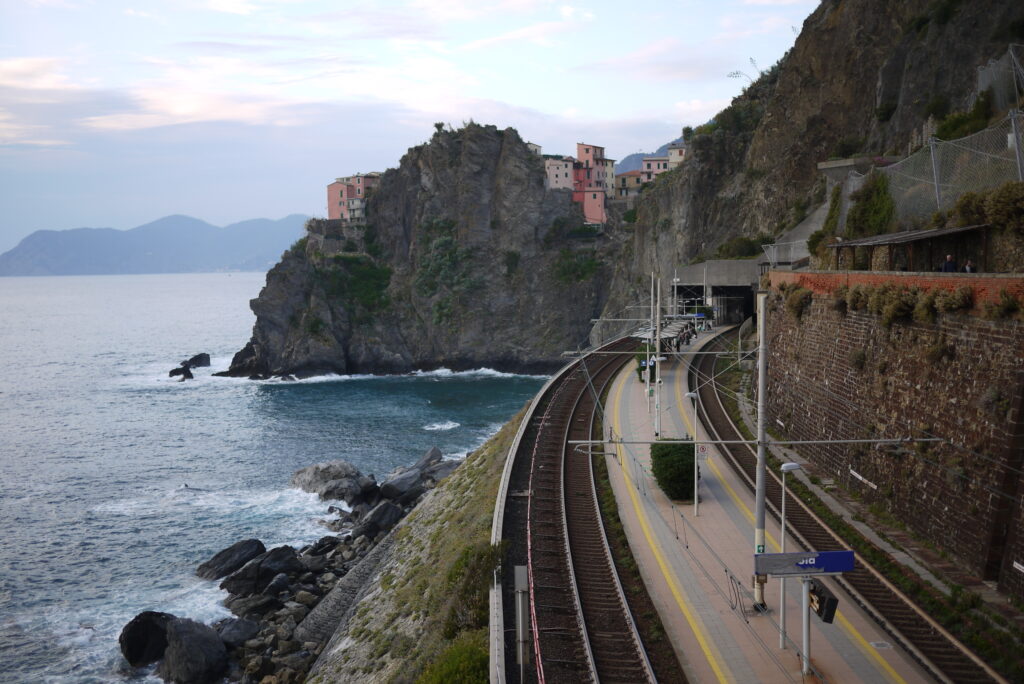Manarola is the second smallest of the Cinque Terre towns that attract visitors from all corners of the world. It’s famous for the pastel-hued buildings, calm aquamarine waters, and rugged vineyard cliffs. But one thing that makes this place somewhat heroic is winemaking. Here is everything you should know about this magical place.

Best Way to get to Manarola is by train.
Regardless of how long you plan to visit Manarola, the best way to get there is by train. On average, there are 15 trains a day from Florence to Manarola. But because the town is tiny, you won’t find direct trains. All trains to Manarola must pass through La Sprezia. Other trains have two changes – usually the first in Pisa, the next one is Campo di Marte and then La Spezia. And depending on the route you take, the trip can take up to 3.5 hours.
For instance, you can start from Genoa to Spezia and then towards your destination. You should note how many changes you need to make. As you transverse the five villages in Cinque Terre, you can also choose the express train. It runs every 20 minutes from March to November.
If you’re passing through La Spezia, you may want to sit on the left side of the train to explore the magical views. Keep in mind that the train service is offered a few times during the weekends and holidays. So, be sure to check the schedules in advance. Once you get to Manarola, you can use the eco-friendly buses on the walking paths.
More info about getting to Cinque Terra please see here.

Manarola walking down from the car park
Best Gelato in Manarola Gelateria Cinque Terre.

Best gelateria in Manarola
A tour to the wineries works up an appetite for gelato. But all Gelateria in Manarola is not equal. If you want to enjoy the ice cream joint, then the Gelateria 5Terre will exceed your expectations. This is the most famous Gelateria that makes amazing pastries and popsicles for the delight of locals and visitors alike.
The main characterisct of their gelato is that everything edible, It is served in a biscuit container with an edible spoon. The standout flavor here is Loveria. It consists of a mixture of chocolate, vanilla, and pistachio. If you have some dietary restrictions, you’ll find some lactose and gluten-free options. If you want to put your taste buds to the test, you can try the refreshing combination of lemon and licorice.
Gelateria 5Terre is a delight for people with food intolerances all their icecreams are gluten free. No wonder this place appears as an icon to many tourists’ pictures, especially those that come to Manarola. It also offers a real welcome break during those sweltering summer days.
Since Manarola is a small charming town, this is a must-stop on your next visit. You’ll love the great service and friendly staff. Most visitors find it a generous spot, and that’s why they give a good rating. While the Gelateria can be busy at times, it’s certainly worth the wait.
Please see here the reviews of this gelateria.
Sciachetrà and acrobaitc winemaking.
Manarola is known for making the signature Sciacchetrà wine. It comes from special grapes carefully chosen to bring out the unique taste. Plus, you can pair it with cheese and desserts.
Given the topography of the area, grapes are the only crop of choice. It’s primarily a white grape territory. Some of the varieties you’ll see are albarola, Bosco, and Vermentino – you’ve probably heard of the latter.
The Bosco variety accounts for 40% of the blend, while the other percentage contains other varieties permitted. To bring out the sweet taste, the grapes are not pressed and fermented immediately after harvest. After the grapes arrive at the winery, they are allowed to dry naturally until the sugar content reaches higher level, it can be considered a passito wine such as the tuscan vinsanto.
Sciacchetrà wines feature golden-yellow colors that turn to amber over the years. In addition, they offer aromas of white blossoms, honey, and hints of citrus. The secret with this unique wine is that it must be aged before commercial release.
One signature wine is the Sciacchetrà from Cantina Cinque Terre. It’s a white wine produced by a company that pays attention to the manufacturing process. It comes in a 37.5 cl bottle and is distinguished from the rest by the hint of apricot and honey.
Sciacchetrà wine can be the perfect accompaniment to substantial and spicy cheeses. Being a rare wine, it’s best served at 16 degrees centigrade in transparent crystal goblets. One feature that makes this wine unique is its excellent capacity to improve with age. If you preserve it well, it has an average conservation period of 25 years. To preserve the taste, the bottles should be placed horizontally in a cool, dry place.
For more info about the production area please see here.
More information about how sciachetrà is made please see here.

The lanscape of wines yard in Manarola

winemaking in Manarola the old way.

Manarola from far

